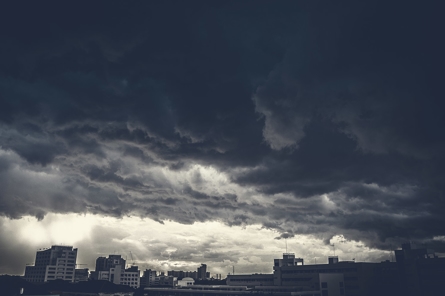According to an AccuWeather spring forecast, we're in for a highly active, severe weather season. A recent and devastating round of tornadoes and thunderstorms across a wide swath of the central, southern and eastern states have borne that prediction out.
How can you prepare and protect your property from spring storms? And if you do experience a loss, how can you recover? We’ll look at common severe weather events that may accompany seasonal thunderstorms and provide some precautionary tips and recovery advice if disaster strikes your home.
Tornadoes
AccuWeather’s forecast predicts 200 to 300 tornadoes in April and 250 to 350 in May, well above the historical averages from 1991 – 2020 (182 for April and 268 for May). Tornadoes can happen anywhere within the U.S.; last year, tornadoes were reported in every state of the contiguous U.S. except for Nevada, Vermont and Maine.
Wind damage is the primary hazard caused by a tornado. Accordingly, structural elements around your home or building are the primary points to check and secure:
- Inspect and reinforce your roof. Inspect the roof to make sure it is sealed tight. Consider reinforcing the roof with hurricane clips. These clips can help prevent the roof from lifting off the home.
- Trim trees, branches, and bushes around the home to help minimize debris damage.
- Know how to turn off utilities. Locate the home’s gas and water shut-off valve. If damage occurs, know how to shut these valves off to prevent further loss.
- Secure large furniture and appliances: Anchor down large pieces of furniture to the wall and/or floor with zip ties or furniture straps.
Hail
Hail forms in thunderstorm clouds when updrafts carry raindrops into icy atmosphere areas. The droplets freeze, and layers of ice accumulate until they become too heavy and fall to the ground as hailstones, which can be as large as a baseball.
Hail can damage your property by breaking windows, destroying the siding, cracking roof shingles, and tearing through screens or outdoor furniture.
Take these measures to help prevent damage:
- Reinforce your roof: Use impact-resistant roofing materials, especially in hail-prone areas.
- Install storm shutters or impact glass to protect windows and minimize indoor damage.
- Trim trees to prevent branches from falling and damaging your home during a storm.
- Review your homeowner’s insurance: Make sure it includes coverage for hail damage—some policies exclude or limit it.
Flooding/Flash flooding
Flooding can result from excessive rain, thunderstorms and overflows of dams and other water systems. Floods may develop slowly or come quickly, as in the case of flash flooding, without warning.
Minimize water damage to your home with these tips:
- Move valuables to a high location.
- For drains, toilets, and other sewer connections, install backflow valves or plugs to prevent floodwater from entering.
- Know how to turn off utilities.Turn off electrical power when there is standing water, fallen power lines, or before you evacuate. Turn off gas and water supplies before you evacuate.
- Consider buying and installing sump pumps with backup power. These can be essential to preventing a flooded basement.
Additional Emergency Preparedness Tips
Spring thunderstorms can vary in intensity and predictability, making it challenging to prepare for specific hazards. These emergency tips are essential for any disaster in any season:
- Stay informed. Keeping up with current weather conditions is your most important precaution. Find and use a reliable weather app and available local alerts, news sources and social media.
- Review your emergency kit or create one if you need to. Ensure it has essential supplies like food, water, first aid and medications. You should include important documents as well.
- Create a communication plan for your household. Create and distribute an emergency contact list and evacuation route. Conduct drills so everyone knows their roles and responsibilities.
Recovery Steps
Sometimes, despite best efforts and preventive actions, disaster can strike. Take these steps to protect yourself and your family and mitigate the damage:
- Ensure your safety. Check yourself and your family for injuries, and call 911 if needed.
- If you can enter your home, and there isn’t standing water over 2 inches high, shut off water and electricity.
- Check for gas leaks. If water is approaching any gas-fired appliances, evacuate the property.
- Keep informed. If you are in a shelter, return home only when authorities say it is safe.
- Contact your insurance company to assess damage, repairs, and costs. If needed, they can direct you to specialists in disaster restoration.
- Document property damage with photographs and video.
- Contact a reliable restoration company. A good restoration company can guide you through the recovery process and help through every phase, including water removal and drying, packout and content management for your belongings, and construction and repair for structural damage.
If you experience an unexpected event and need professional disaster restoration, the experts at ServiceMaster DSI can help. We work directly with insurance providers during repairs to help streamline the claims process and provide you with the best customer service experience. To report a home water damage loss, contact our restoration teams today at 844-413-3130.


